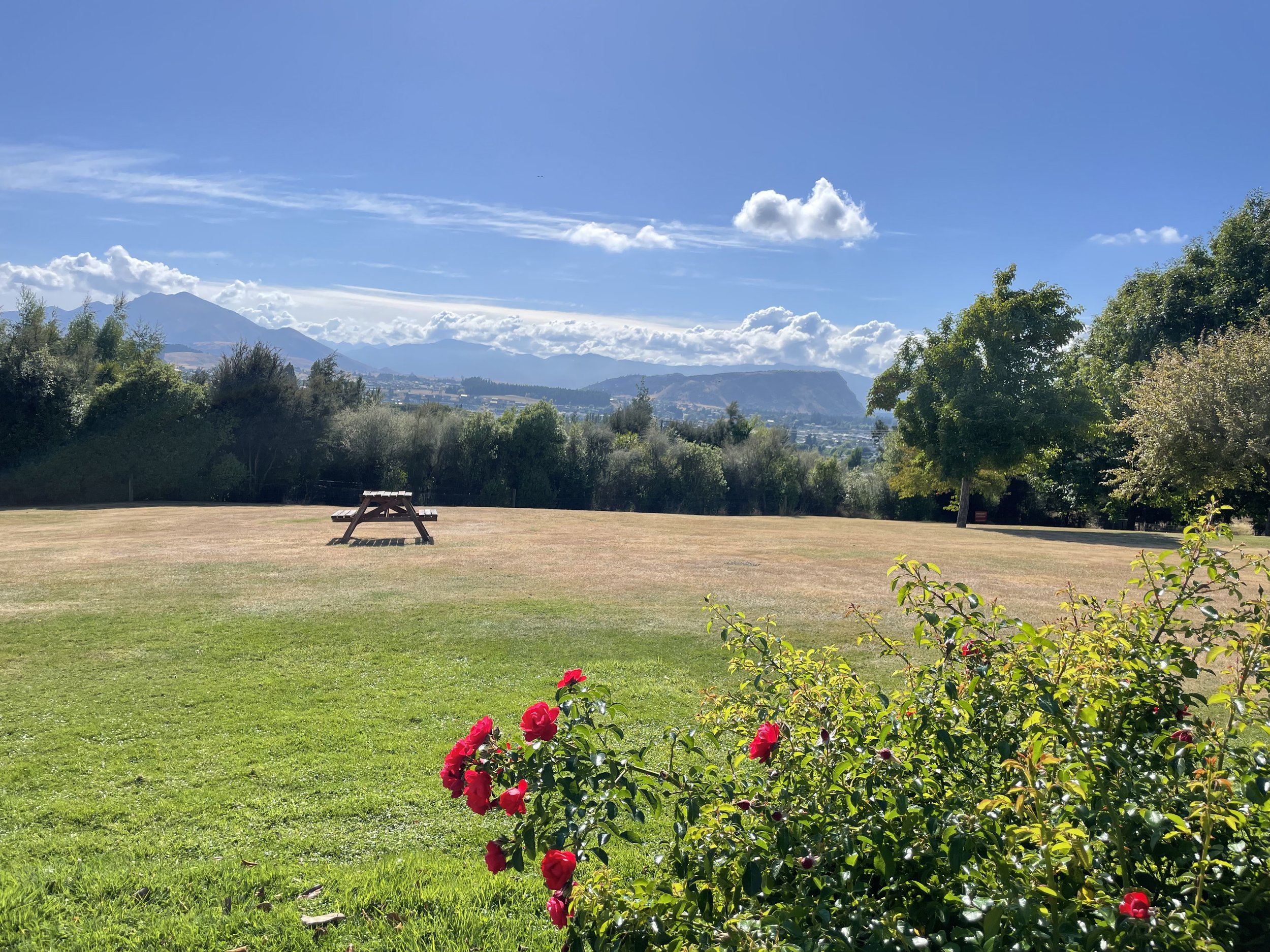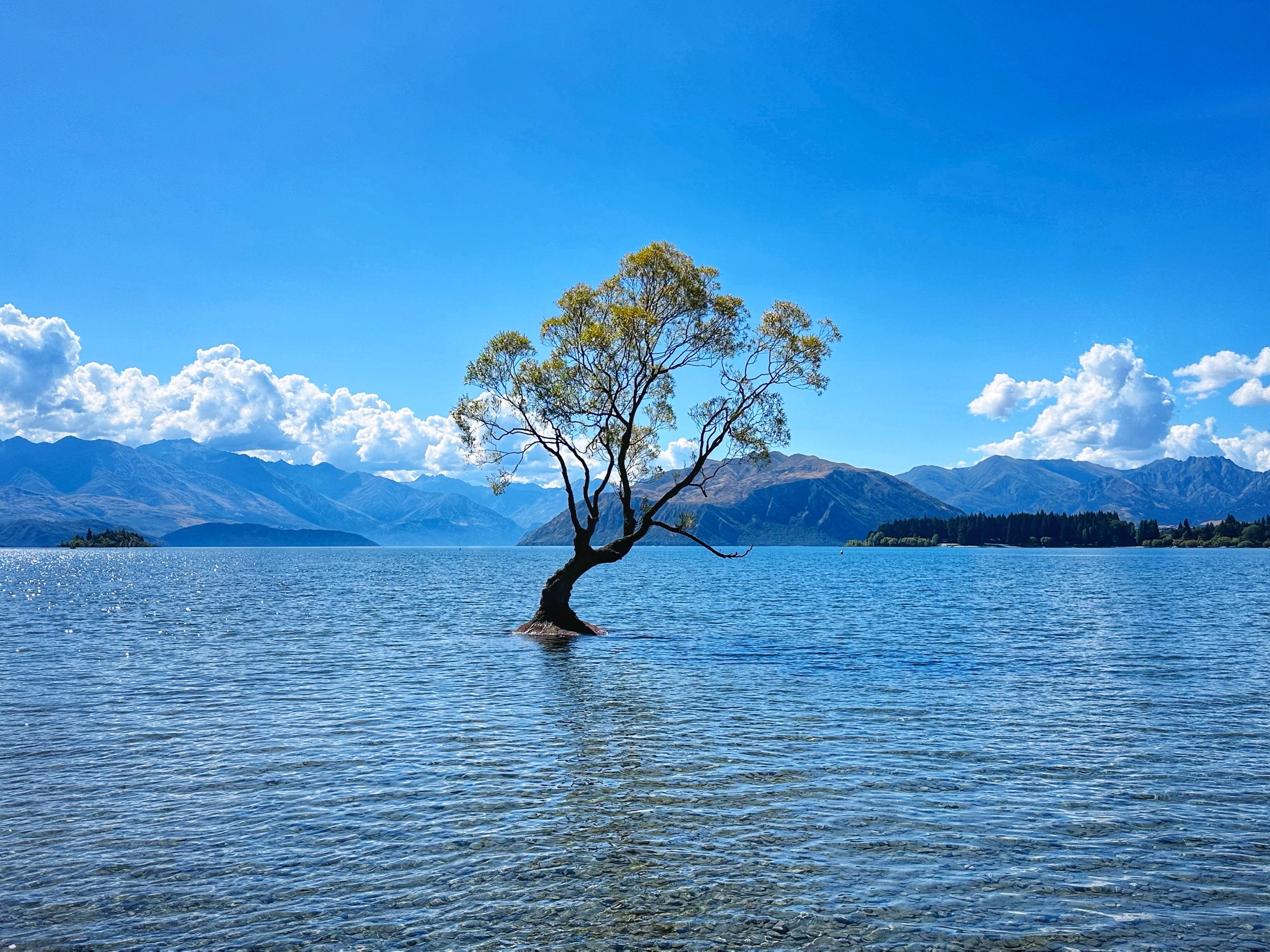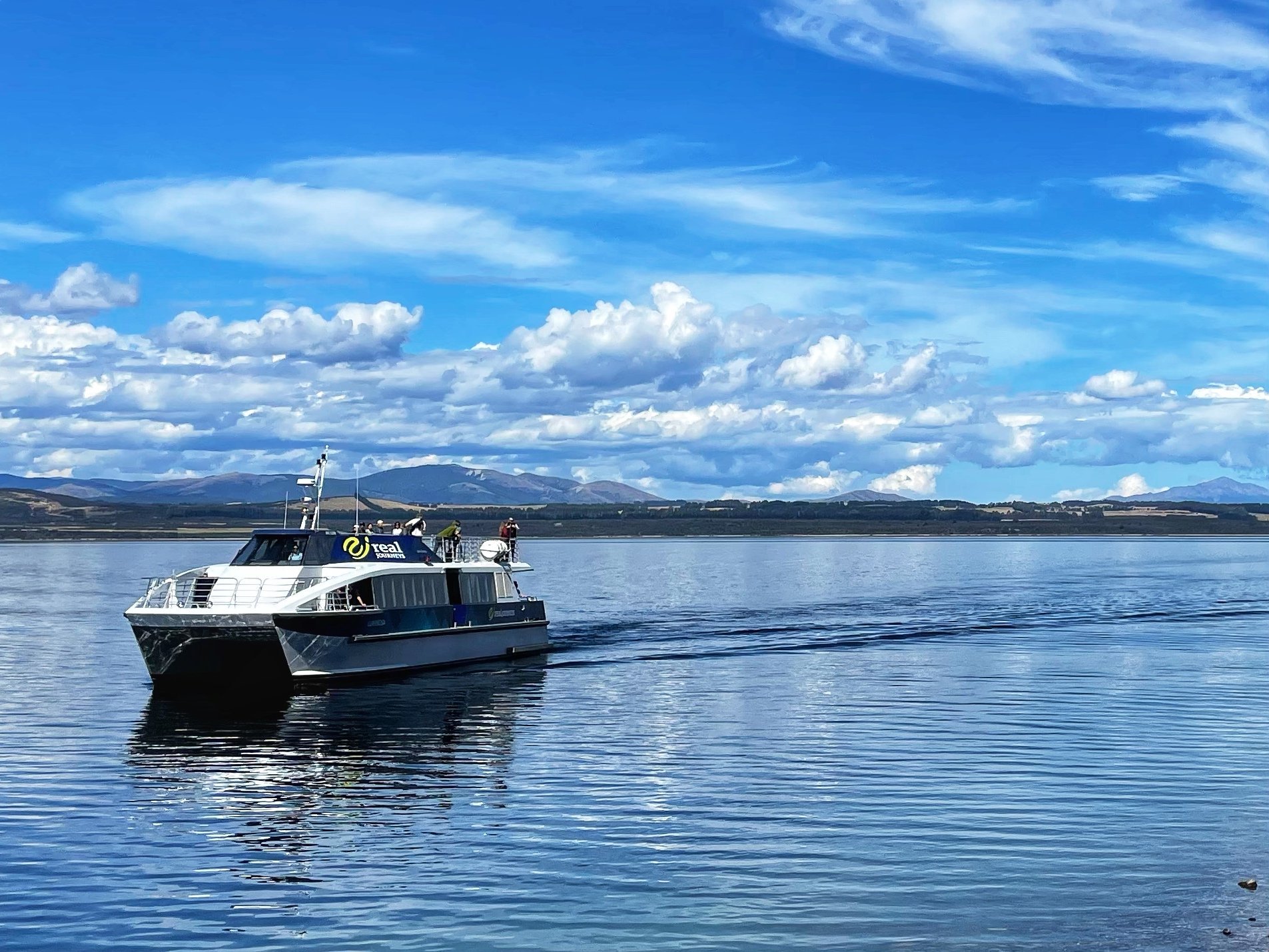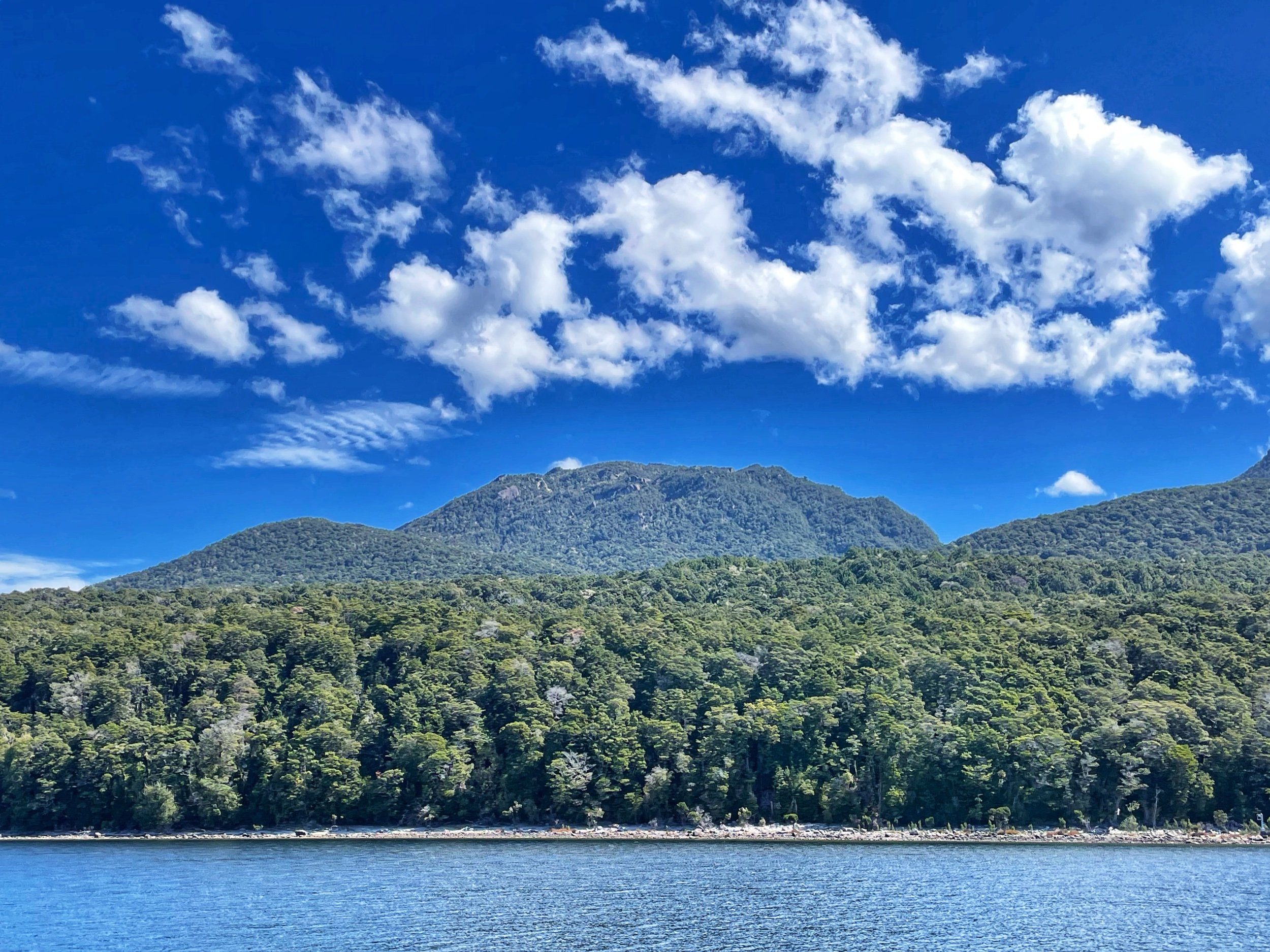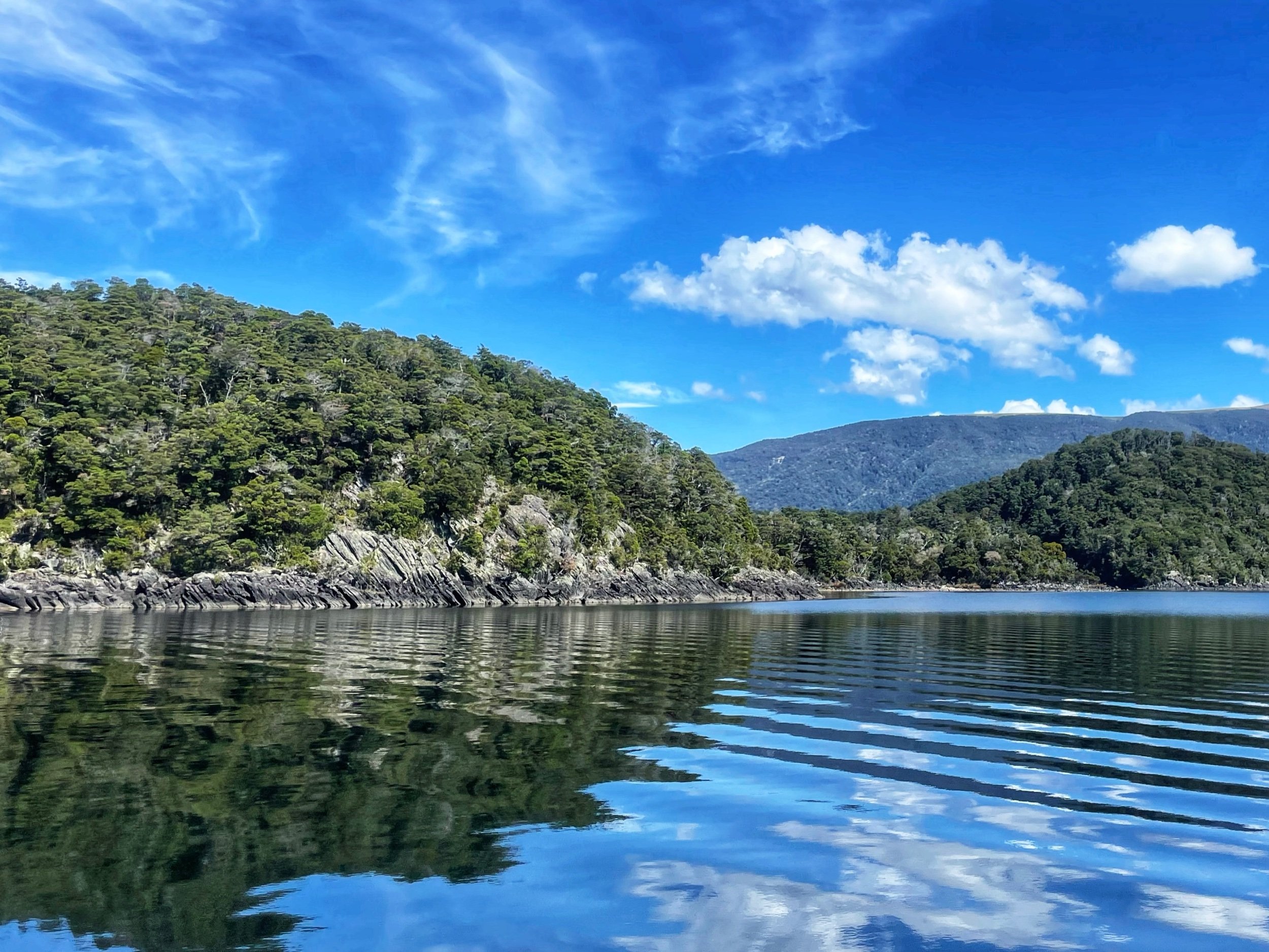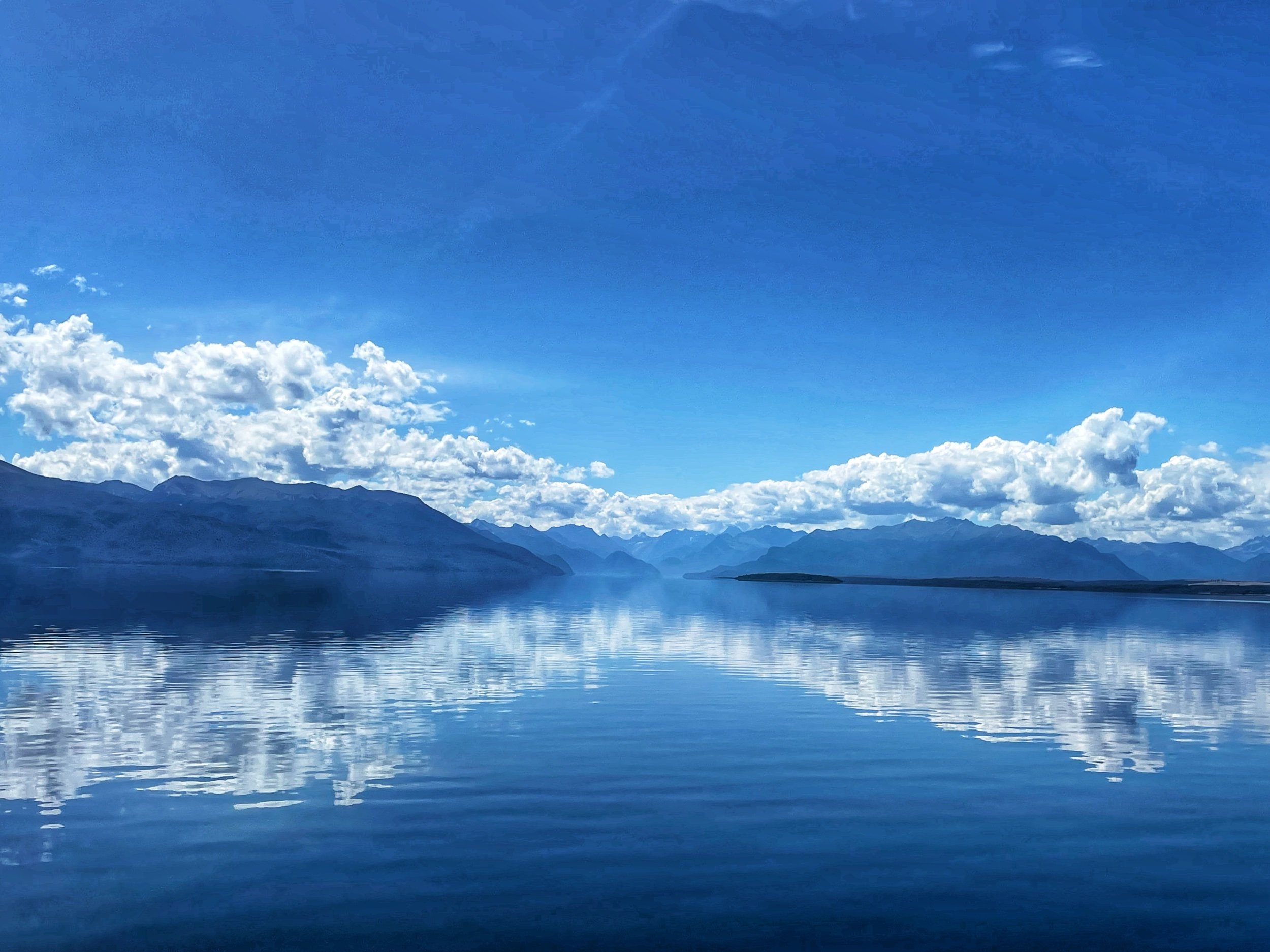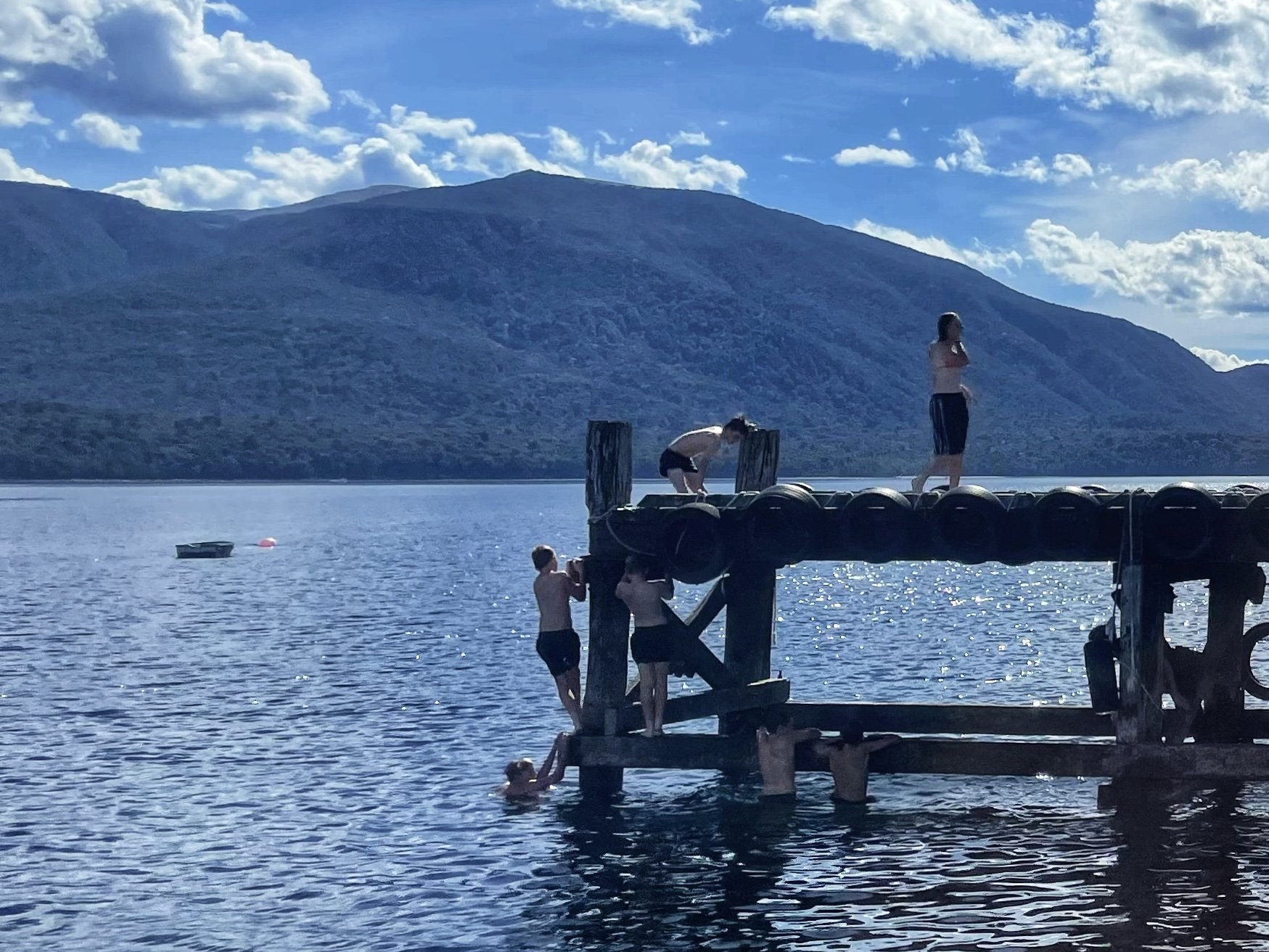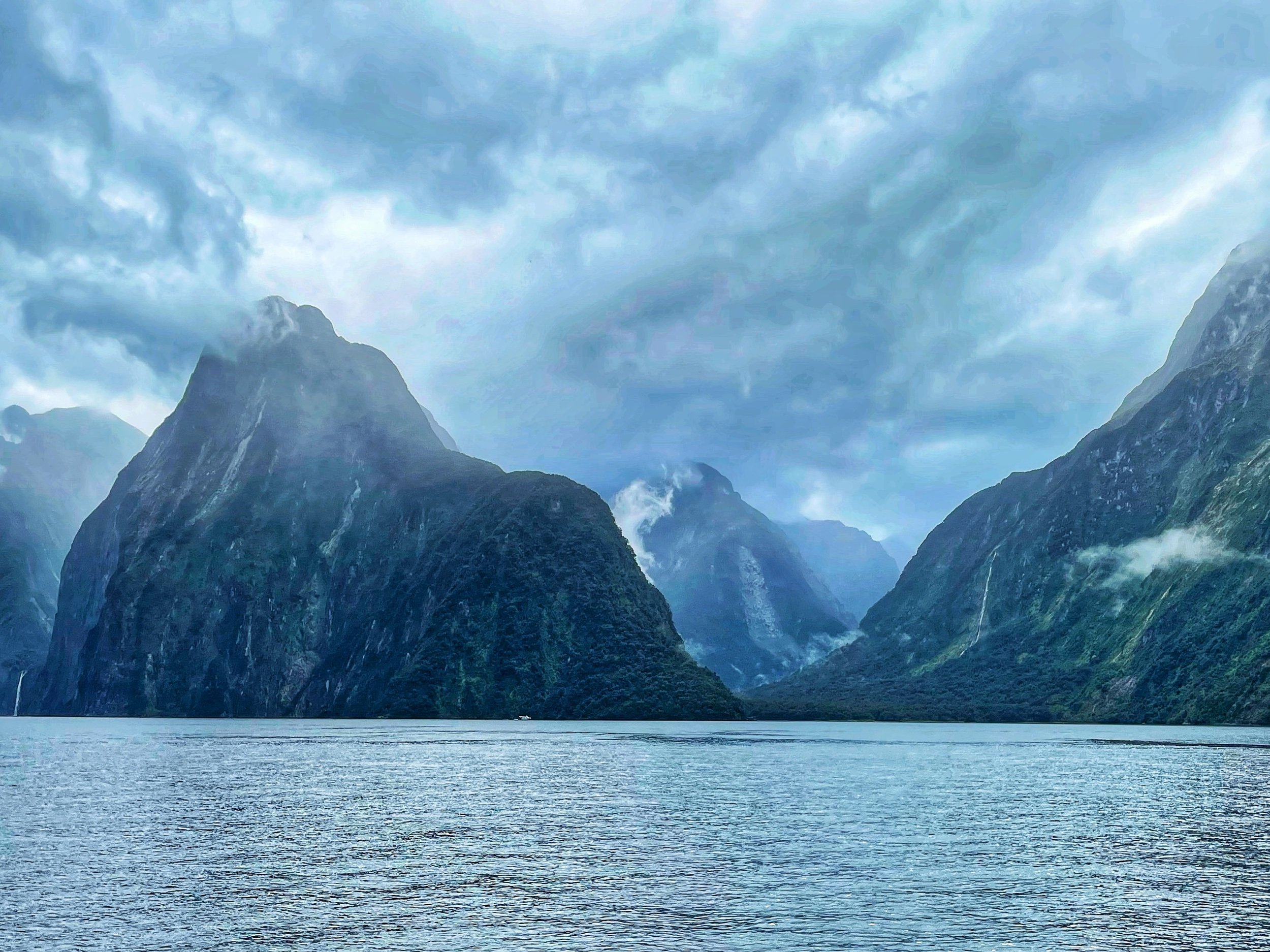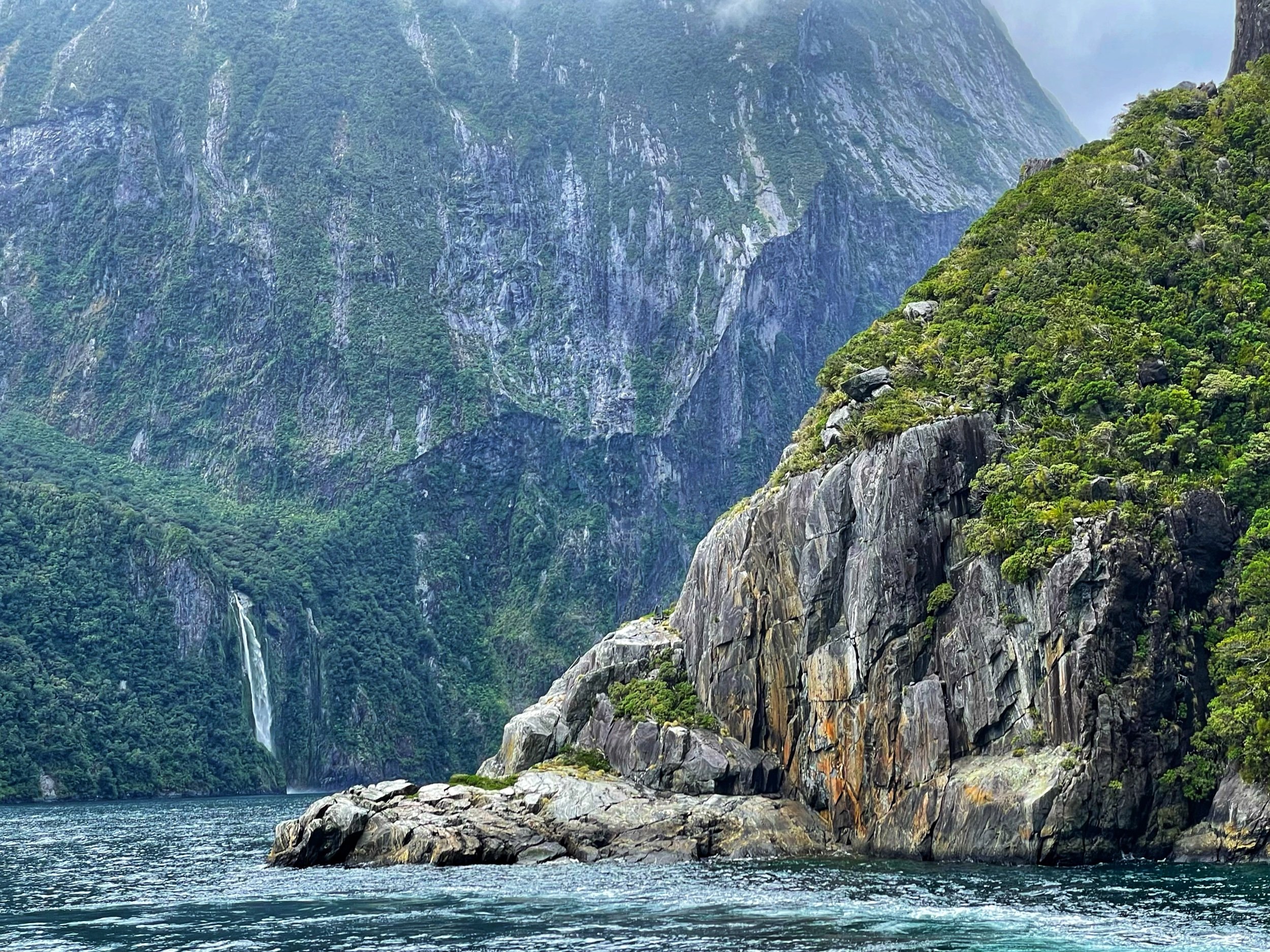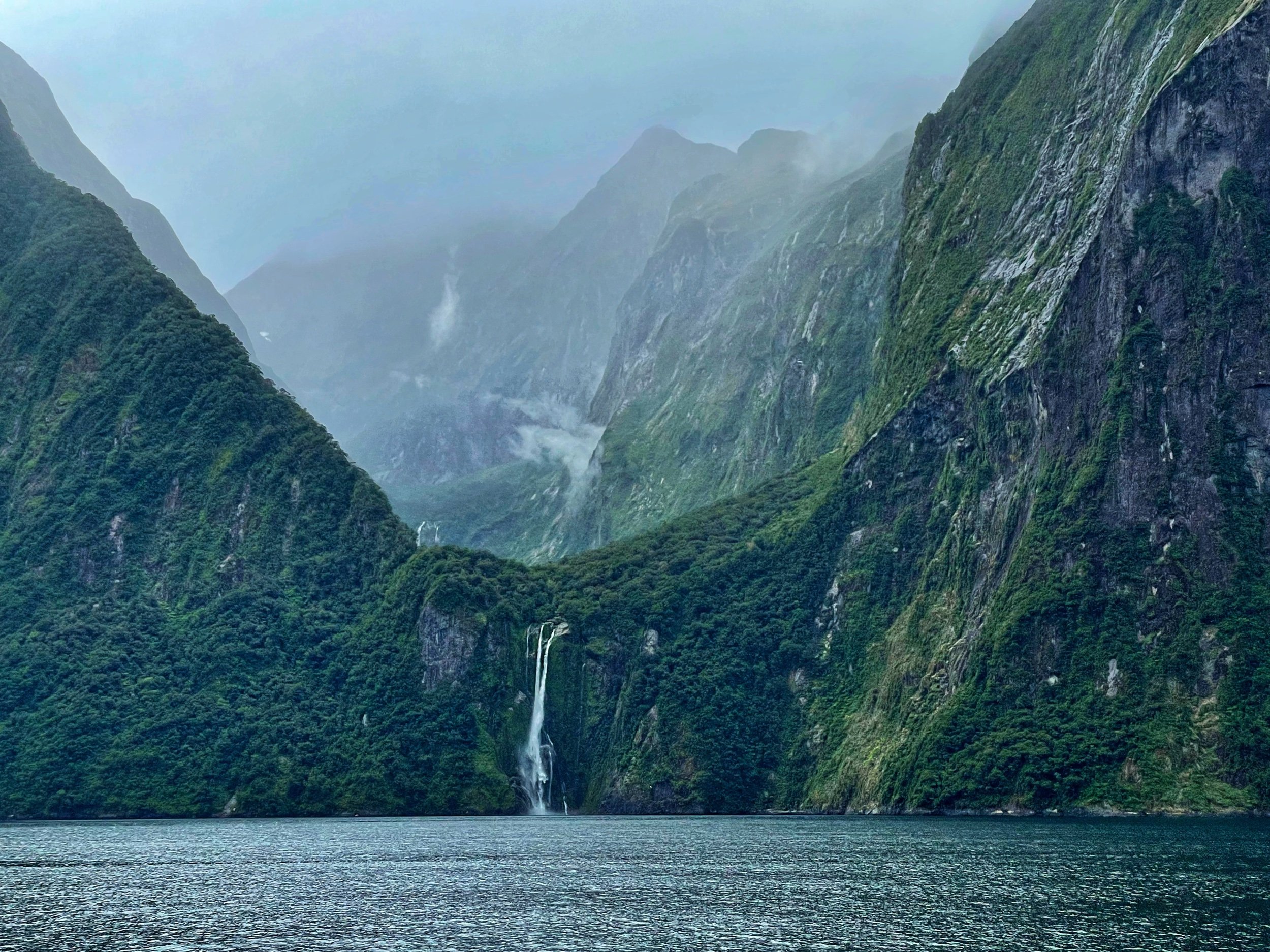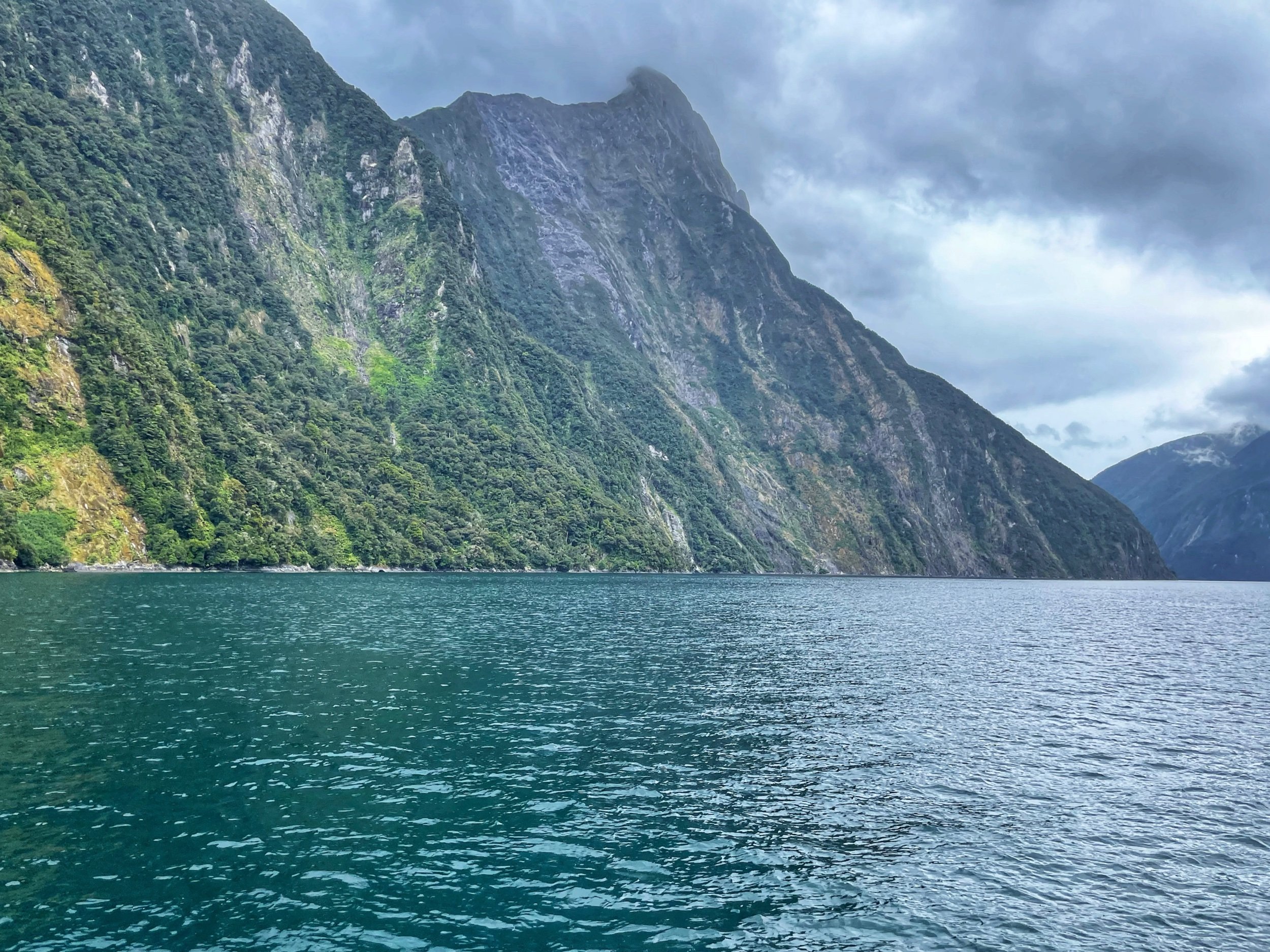Otago and Southland, New Zealand
Otago and Southland highlights
Wānaka
Te Anau
Aurora Caves - Glowworms
Piopiotahi (Milford Sound)
Queenstown
Why visit Otago and Southland
For astounding scenery and wildlife.
Getting there and around
For our trip through New Zealand we hired a small SUV car from Apex for 28 days at a cost of £55 per day which included car seats, unlimited mileage, zero excess and roadside assistance. We booked this many months in advance and this is recommended because there are rental car shortages during the summer.
From Aoraki (Mount Cook), we drove for just over 2 hours to Wānaka. After our stay in Wānaka we drove for 3 hours to Te Anau. The road to Te Anau was winding and steep, particularly the section of state highway 6 known as the ‘devil’s staircase’. After our stay in Te Anau we backtracked 2 hours to Queenstown ready for our onward flight out of Aotearoa.
Queenstown was our last stop in Aotearoa. During our month-long road trip we drove 3320 kilometres / 2062 miles and filled up the petrol tank 6 times, at a total cost of £300.
Accommodation
Wānaka Top 10 Holiday Park
This was a peaceful and pretty campsite at the edge of Wānaka with a handful of cabins and caravans. It had two small playgrounds, and gorgeous views over the town and lake. Our self-contained unit was spacious and nicely furnished. It cost £155 per night with a Top 10 membership card.
Our star rating: 5
Our cost rating: 5
Te Anau Airbnb
In Te Anau we stayed in a New Zealand ‘bach’ or holiday home which we rented through Airbnb. Although this lacked some modern amenities that our other Airbnbs to date have had (such as a dishwasher or drier), it was quiet and well located for our day trips in this area. It cost £95 per night.
Our star rating: 3
Our cost rating: 5
Holiday Inn Express Queenstown
This hotel was modern and smart, and the customer service at the reception desk was excellent. Our 2 x double bed room cost £200 per night. It wasn’t the biggest hotel room but it was clean and had very fast free wi-fi. Breakfast was a decent selection of continental and hot cooked items. There were plenty of guest laundry facilities (£2 per load of washing, £2 per 20 minutes of drying).
Our star rating: 4
Our cost rating: 4
Wānaka
Wānaka is a small lakeside town in the Otago region on South Island. It’s a popular winter ski resort and summer lakeside destination.
The playgrounds in Aotearoa have been top notch, and Wānaka’s was no exception. While not huge, it had some good climbing frames and cool spinning balance balls. Like many of the playgrounds we visited, it was located on the lakefront, making it a pretty and peaceful place to hang out.
We walked along the lakefront to check out ‘That Wānaka Tree’. The tree is one of the most photographed in the world and features on countless Instagram feeds and travel websites. The willow tree sits alone in the water with the backdrop of Mount Aspiring National Park framing it.
The tree is notable for its aesthetic rather than ecological value. It was undoubtably a gorgeous tree, albeit rather bizarrely surrounded by photographers all afraid of missing out on the perfect shot; and of course we joined in with the hype.
We spent an afternoon at Puzzling World where a family ticket for 2 adults and 2 children cost £35. There were a number of illusion rooms including a tilting room that messed with our balance, a shrinking room that made us feel like Alice after eating the cake, and a small exhibition on the inventions of Kenji Kawakami (who invented the selfie stick, baby mop and electric hammer).
Outside there was a 3D maze with a challenge to find not just the centre but all four corners. It was a sunny day and very hot in the maze, so after an hour of failing to complete the maze we got some ice creams and then tried again. We managed to complete the maze on the second attempt in about 20 minutes, but only by employing the ‘wall-following’ method.
We liked Wānaka, and in hindsight felt that we could have happily stayed longer. The town was pleasant to walk around, with a variety of shops and some great places to eat. The Big Fig had a tasty and healthy selection of vegetarian food, and Sushi-Mii gave the kids their first taste of Japanese food ahead of our upcoming trip to Japan.
Te Anau
Te Anau is a small town (village really) on the eastern shore of Lake Te Anau in the Southland region on South Island. It is the nearest town to Piopiotahi (Milford Sound) and a jumping off point for tourists wanting to visit the fiords or take scenic helicopter flights.
We really liked this chilled out little town. We enjoyed brunch at the Sandfly Cafe, and the following evening a lovely takeaway from Radha’s Indian. The town had a lovely playground in a beautiful setting under shady trees next to the remarkable lake.
Aurora Caves - Glowworms
We booked the Real NZ Te Anau glowworm tour in advance online and paid £140 for 2 adults and 2 children. There were about 80 people on our tour.
We boarded a boat for a 30 minute trip to the western shore of Lake Te Anau. The lake was spectacular and we spent the boat journey taking photos and admiring the scenery.
After disembarking at a small visitor centre, we were split into smaller groups and assigned to guides. The maximum group size per guide is 14, but our group only had 11 people. Our guide Dom explained that the limestone Aurora Caves are 6.7km long and a relatively young feature at only 12,000 years old. Dom told us we would go through only about 500 metres of the cave.
We all ducked down to get into the cave and quickly walked along raised metal platforms over an underground river and waterfall. We soon reached a small boat. Once we were seated, Dom told us we would need to stay quiet and keep our devices off, so as to not disturb the glow worms. Dom then turned out the lights and steered us through absolute darkness to the glowworm grotto.
It was difficult to tell how long we spent in the grotto. We experienced a prolonged period of magical, contemplative silence in total darkness; gazing up at clusters of glowworms that looked like distant stars. The kids did brilliantly to stay quiet and enjoy the moment. We were all transfixed.
After our group exited the cave we were given drinks and a presentation about glowworms. We found out that this species (Arachnocampa Luminosa) is unique to Aotearoa and is a type of fungus gnat, and a member of the arachnid family. We learnt how they produce the bioluminescence, catch food and reproduce.
The whole experience, including the boat trip across the lake, the walk through the caves, and the time in the glowworm grotto was beguiling, fascinating and unique.
Piopiotahi (Milford Sound)
Fiordland in the southwest corner of South Island is one of the wettest places on Earth, and so it was no surprise that it was pouring with rain when we woke up on the day of our Piopiotahi (Milford Sound) trip.
We had planned to get up early to visit Mirror Lakes and complete the short Lake Gunn Nature Walk on our way to the fiord. But given the weather, we decided to forsake these extra stops and instead gave ourselves a leisurely start to the day.
The 14 fiords in this area were carved out of the mountains 20,000 years ago when glaciers melted and the sea came in and filled in the gaps. All of the fiords except Piopiotahi are inaccessible by road and the area is covered in steep mountains with dense vegetation.
Setting off from Te Anau at 10am we easily beat all the tour groups who were travelling by coach from Queenstown. It poured with rain for the whole drive; the mountains were shrouded in mist and the views were limited. On the return journey the sun came out and the clouds had cleared, revealing far reaching views of the mountains.
When we got to Piopiotahi we quickly found a parking space and paid for parking (a flat fee of £13 for 5 hours). We had booked our 12.45pm boat trip months in advance and had chosen Cruise Milford because they are a local family-owned company who use smaller boats. Tickets cost £60 per adult and £18 per child.
Luckily the rain stopped just in time for boarding the boat, but it was still misty and cloudy which made for good photographs.
There were about 50 people on our boat (the maximum number is 75), and there was plenty of space with comfortable sofa seating. Free drinks and cookies were provided and we also brought with us our own water and snacks.
The tour was 2 hours long, during which time we sailed the length of the fiord, out to the Tasman sea (where the waves were huge and the boat got very rocky!), and back again.
Along the way we saw lots of waterfalls and at one point we pulled up right underneath Stirling Falls. Throughout the trip, the commentary from the captain was informative and humorous.
The scenery was remarkable and we could see why the fiord is cited as Aotearoa’s most stunning natural attraction.
We wanted to visit Piopiotahi (Milford Sound) for the scenery but the highlight turned out to be the wildlife. We managed to see a small seal colony including a mum and her pup.
We had a pod of dolphins swim alongside and at the front of the boat for ages. On the way back they swam alongside us ‘breaching’ (leaping and twisting out of the water). We’d never seen dolphins before and it was wonderful to see these incredible animals in the wild.
Queenstown
Queenstown, in Otago on South Island is another lakeside town, with a population of around 15,000 people. It is built on an inlet around Lake Wakatipu. Busier than Wānaka and more commercialised, it had a lot of shops and cafes near the lake front (and at out-of-town retail parks near the airport).
At Queenstown we enjoyed strolling along the lakefront through the beautiful gardens and spending time at the bathhouse playground. Yet again, the playground was excellent. The UK could really learn from Aotearoa’s playgrounds which have been, without exception, fantastically designed and in stunning natural settings throughout.
The lakeside setting at Queenstown is picturesque. If it had been in Europe it would no doubt be home to the uber wealthy, with super yachts and privatised beachfront. But here we felt like we were enjoying a slice of the French Riviera or Italian Lakes without the extortionate price tag or exclusivity.
Queenstown is home to a number of adventure and adrenaline sports including skiing and snowboarding in winter, jet boating, rafting, bungee jumping, mountain biking, paragliding and sky diving.
We liked the luge so much at Rotorua that we decided to do it again here. We paid £110 for the gondola and 6 rides each on the luge. There were two tracks at Queenstown Skyline - the ‘arrow’, for beginners and tandem riders, and the faster ‘dart’ track with chicanes and bumps. We really enjoyed the luging!
On a whim, William decided he would like to try paragliding so Harriet went with him. We paid £320 for two tandem flights with G Force Paragliding. This was an expensive activity and a real treat.
Because the wind conditions at the top of Ben Lomand hill above the gondola changed, we couldn’t take off there, and instead we were driven 20 minutes to another take-off point at Coronet Peak. Our instructors got us strapped into harnesses and safely briefed.
As soon as we launched, we felt weightless, gliding like feathers taken by the wind. The panoramic views were immense - we could see over to Queenstown and Arrowtown, Lake Wakatipu and the mountains all around. Harriet’s instructor included some wing overs (360s in the air) which were disorientating and thrilling. William was content with staying up high taking in the views before gliding to the ground.
Final Thoughts
We absolutely adored our time in Aotearoa which is a stunningly beautiful place, full of spectacular scenery; unique wildlife; and laid back, friendly, kind people.
We travelled during a time when the country was hit hard by weather events and yet we saw impressive compassion, pragmatism and resilience.
The people of Aotearoa are privileged to live in such a wonderful country, and we felt incredibly grateful to have the opportunity to visit.
Aotearoa - some practical notes
Accommodation: Hotel rooms usually had two queen sized beds big enough for families with kids happy to share. Self catering cabins and apartments were good options with two (or more) bedrooms. Hotel rooms and apartments were very spacious and much larger than in the UK.
We booked our accommodation online about 6-9 months in advance. We paid for most of our accommodation in advance using UK debit or credit cards. Some holiday parks required a deposit paid in advance online, and then payment of the balance on arrival. All accommodation accepted debit and credit card payments.
We booked accommodation with laundry facilities and this was easy to find. Laundry usually cost around £4 a load. We generally did need to have cash notes which we would change for coins at our accommodation.
Food: We stayed in a lot of self catering accommodation and mainly cooked our own meals. Four Square and New World were equivalent to UK supermarkets in size, variety and price. Imported fruit, branded goods, meat and eggs were more expensive than in the UK. Eating out was easy and prices were cheaper than in the UK. The quality of meals everywhere was excellent. A simple one course lunch cost about £25 - £30 for the 4 of us.
Money and budget: We paid for almost everything in Aotearoa by booking online in advance or by using Mastercard debit or credit cards. By using our Starling and Halifax Clarity cards we didn’t pay foreign exchange fees. Contactless payments were available in most places but not all.
There was no culture of obligatory tipping like in the USA but tips were accepted. Sometimes there were tip jars at the till counter in cafes. We don’t tip (because we prefer employers to pay their staff a decent living wage), but we were never made to feel like we should.
We spent around £350 per day (for 2 adults and 2 children). This daily spend included accommodation, car hire and petrol, all food and groceries, laundry, activities including paragliding, luging, mountain bike hire, boat trips and attraction entrance fees, and shopping and souvenirs.
Transport: We hired a small SUV and drove from Auckland to Queenstown. We booked our hire car about 9 months ahead. It cost £1512 (£54 per day) which included tickets for the Interislander Ferry. The car took unleaded 91 petrol, and fuel prices were around $2.15 NZD / £1.10 GBP per litre. Petrol is self serve (as in the UK) but we saw no pay at the pump.
Speeds and distances are in kilometres. Driving is on the left. Roads are often single lane, narrow and winding. But for anyone with experience driving outside of cities in the UK the roads should be manageable.
Roadworks with temporary traffic lights were common but traffic is so light there’s rarely much delay.
Wi-Fi and data: We each purchased Airalo e-sim cards for Aotearoa. A 5GB allowance for 30 days cost £17. Airalo was easy to use with iPhone and worked across the country.
Wild Rumpus Travel copyright © 2021 - 2023 all rights reserved.



